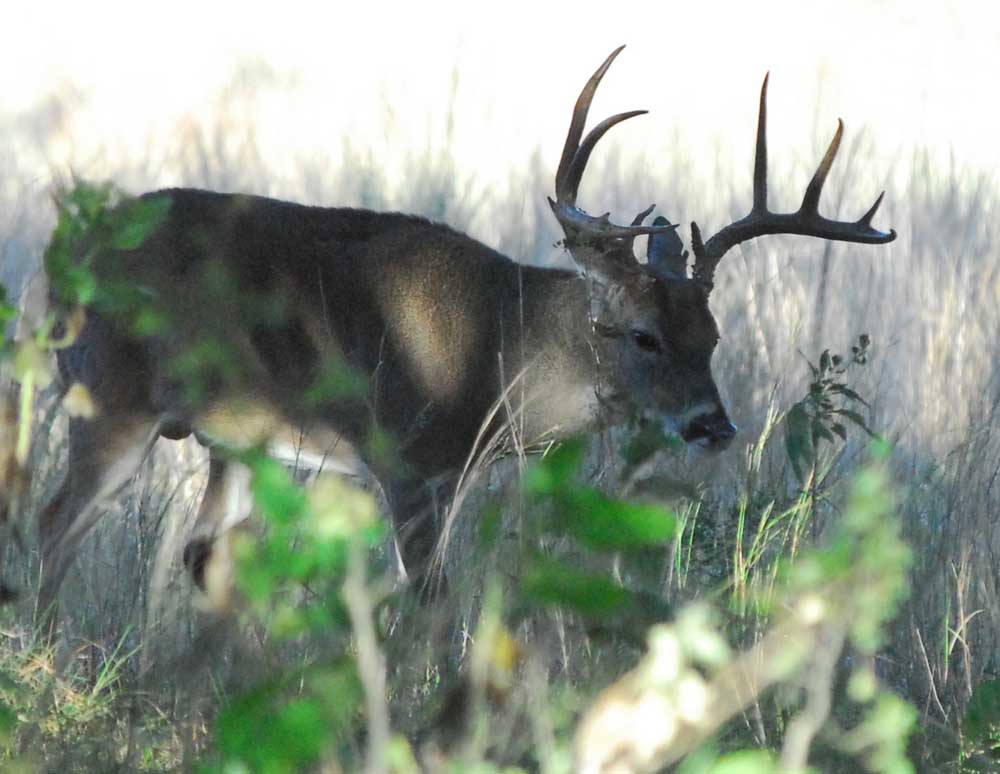Hiding In Plain Sight: Wind direction, background more important to hunter than camo
Published 4:00 pm Thursday, July 28, 2022

- When considering what is the best camouflage for deer hunting in Texas, take a cue from nature and remember you just have to blend with your surroundings and watch your background and wind direction.
When I first started hunting, your choice of camouflage was woodlands or woodlands, and that was a radical leap from just a few years before when a hunter would grab whatever shirt or jacket they had in their closet.
For the most part, the woodlands camo clothing was borrowed from military usage, and in the beginning the most common place to get it was at a military surplus store.
Trending
It was not until the 1980s that manufactures started catering to hunters with more designs that mimicked nature. Trebark was the first to market, but they opened the door for untold others like Realtree, Mossy Oak, Drake, Kryptek and others.
The good news about camo clothing is that because it is not worn daily, it can take years to wear out. The bad news, like everything else involved in hunting, the cost has gone up in recent years.
That brings up the question of what is the best camo design for the money. In this case, not the quality of the material and garment, but what camo makes a hunter most stealth to deer.
Let’s start off with a reality check. For most hunters, it really doesn’t matter because sitting 10 or 15 feet above the ground in an enclosed blind you could be hunting naked and the deer would not know. The key there is probably to black out whatever window is behind the deer’s view of you so it cannot silhouette your movements.
If you are more exposed, say while bowhunting in the open, or stalking, then camo might be a little more important. Or maybe not.
Today the camo market comes down to two types, realistic, also known as mimic, and breakup, which is also called digital.
Trending
The realistic styles are designed to blend the hunter with his background, but a design that works in the green canopy of a tree stands out on the ground.
The digital designs basically play tricks on the mind. At close range they mimic smaller size objects like leaves. At a distance they blend with the larger background like trees and shadows.
For military purposes, colors incorporated into a digital pattern must blend in with the surroundings. However, that may not be as important in deer hunting because deer do not see things the way humans do.
“Research shows that deer possess both short-wavelength and medium-wavelength cones which allows them to see some color, but they possess fewer cones than people so don’t see the full-color spectrum like we do,” said Alan Cain, Texas Parks and Wildlife Department’s white-tailed deer program leader. “The short wavelength cones allow for some color vision/detection, generally blues, yellows, black, white and gray.”
He explained that since they are longer wavelength colors, oranges and red appear as gray to deer. That means with the exception of yellows and blues, hunters really don’t need to worry too much about color.
“There’s not much research that I’m aware of for camo patterns, but I would suggest that the pattern itself is probably less important as long as you set up in an area with some background like brush or trees to break up your silhouette,” Cain added.
He said standing out in the open it does not matter what you are wearing because a deer is going to make out your outline or silhouette.
These lessons were driven home for Cain on a recent safari in Africa where he never wore camo on a series of spot-and-stalk plains game hunts.
“There you hunt the wind. There, it doesn’t matter, you could be wearing pink. You are spot and stalking using the wind. That is the advantage,” Cain said.
Cain learned a lesson on blending into the surroundings on a stalk when the hunting party suddenly walked dangerously close and downwind of a 2,500-pound black rhino they had not noticed standing there. Surprised by the existence of the rhino, Cain’s professional hunter simply said, “Run.”
The same thing happens often deer hunting when deer suddenly appear out of nowhere.
For most Texas deer hunters, odor and movement are the biggest issue in spooking deer.
The odor on your clothes and boots can linger after you walk up to the blind. With a window or two open, the wind can also blow your scent down range and if not chase off deer it will at least put them on edge.
Constant movement, and the noise that comes with it, is probably worse. We have all seen deer bust after picking up movement or hearing noise in a stand.
With all this said, hunters are going to wear camo because it is what we do. So, if you are just sitting in a blind, go for comfort. Instead of worrying about pattern, shop for material that feels good, is cool in the early fall or warm in late winter. After that, then go for style and what looks best at the cafe for lunch or when posing for pictures.




